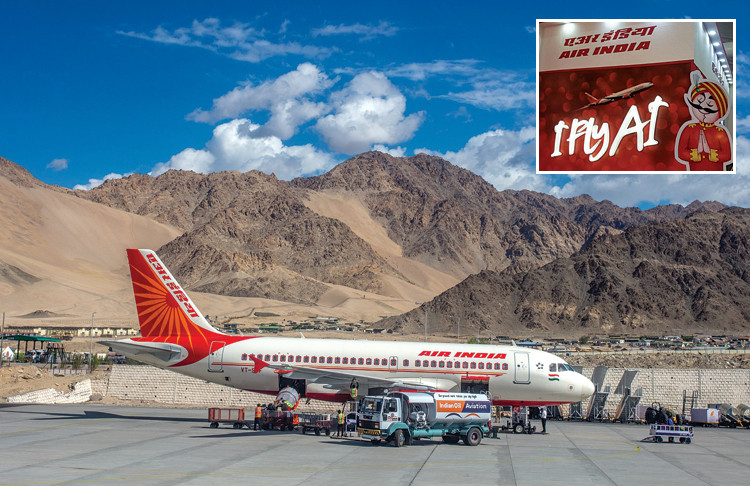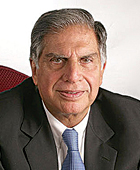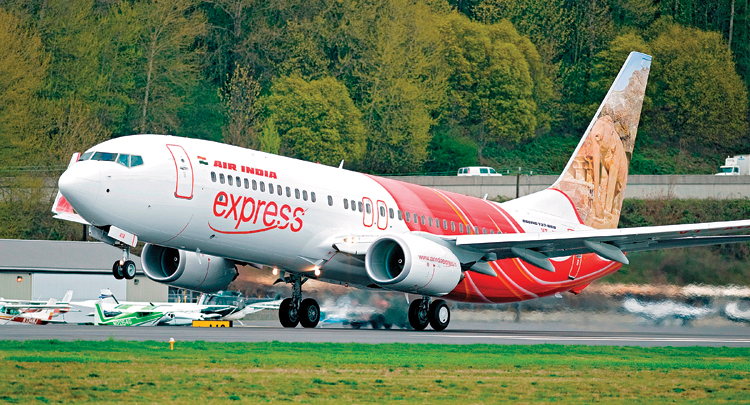INDIAN ARMED FORCES CHIEFS ON OUR RELENTLESS AND FOCUSED PUBLISHING EFFORTS

The insightful articles, inspiring narrations and analytical perspectives presented by the Editorial Team, establish an alluring connect with the reader. My compliments and best wishes to SP Guide Publications.

"Over the past 60 years, the growth of SP Guide Publications has mirrored the rising stature of Indian Navy. Its well-researched and informative magazines on Defence and Aerospace sector have served to shape an educated opinion of our military personnel, policy makers and the public alike. I wish SP's Publication team continued success, fair winds and following seas in all future endeavour!"

Since, its inception in 1964, SP Guide Publications has consistently demonstrated commitment to high-quality journalism in the aerospace and defence sectors, earning a well-deserved reputation as Asia's largest media house in this domain. I wish SP Guide Publications continued success in its pursuit of excellence.
- The layered Air Defence systems that worked superbly, the key element of Operation Sindoor
- Operation Sindoor | Day 2 DGMOs Briefing
- Operation Sindoor: Resolute yet Restrained
- India's Operation Sindoor Sends a Clear Message to Terror and the World – ‘ZERO TOLERANCE’
- Japan and India set forth a defence cooperation consultancy framework, talks on tank and jet engines
India’s National Carrier’s “Ghar Waapsi” after about Seven Decades
Tatas have won the competitive bid for acquiring Air India including wholly-owned subsidiary Air India Express and 50 per cent stake in Air India SATS

Tata Sons have emerged as the winner in national carrier Air India’s disinvestment bid. The Tata group’s holding company, Tata Sons through its wholly-owned subsidiary Talace Pvt Ltd submitted a winning bid of 18,000 crore as the Enterprise Value of Air India, informed the salt-to-software conglomerate.
SpiceJet chairman Ajay Singh was also reported to be a contender against Tata Sons.
Following the acquisition, the Tatas will own a 100 per cent stake in Air India (a full-service airline operating in domestic and international markets) as also 100 per cent in its subsidiary Air India Express (a low-cost carrier airline that focusses on shorthaul international operations especially in the Middle East market) and 50 per cent in the joint venture Air India SATS (airport services on ground and cargo handling). The total permanent and contractual employee strength of Air India & AIXL is 13,500.

RATAN TATA’S REPLY TO SP’S ON AIR INDIA DEAL WIN
Dear Mr Baranwal, Thank you for your note of congratulations on the Tata group winning the bid for Air India. I greatly appreciate the sentiments you have expressed. With warm personal regards,
Ratan N. Tata
“At the Tata group, we are delighted to be declared as the winner of the bid for Air India. This is a historic moment, and it will be a rare privilege for our group to own and operate the country’s flag bearer airline. It will be our endeavour to build a world-class airline that makes every Indian proud. On this occasion, I would like to pay tribute to JRD Tata, pioneer of Indian aviation, whose memory we cherish,” said N. Chandrasekaran, Chairman, Tata Sons Pvt Ltd.
The Tatas will get ownership of iconic brands like Air India, Indian Airlines & the Maharajah. Air India has a fleet of 117 wide-body and narrow-body aircraft and AIXL has a fleet of 24 narrow-body aircraft. A significant number of these aircraft are owned by Air India.
“The Tata Group winning the bid for Air India is great news! While admittedly it will take considerable effort to rebuild Air India, it will hopefully provide a very strong market opportunity to the Tata Group’s presence in the aviation industry,” said Tata Trusts’ Chairman, Ratan Tata.
THE HISTORY BEHIND THIS STORY
The win by Tatas is remarkable mainly for the history that the conglomerate has with the national carrier. The airline was originally founded by JRD Tata, who also piloted the first flight that initiated Indian aviation in 1932. The carrier was then sold to the government in the 1953.
Echoing the sentiments, Ratan Tata also shared, “On an emotional note, Air India, under the leadership of JRD Tata had, at one time, gained the reputation of being one of the most prestigious airlines in the world. Tatas will have the opportunity of regaining the image and reputation it enjoyed in earlier years. JRD Tata would have been overjoyed if he was in our midst today.”
The airline was originally founded by JRD Tata, who also piloted the first flight that initiated Indian aviation in 1932. The carrier was then sold to the government in the 1953.
The central government invited bids for 100 per cent stake sale Air India on January 27, 2020, and transfer of management control along with its complete share in two subsidiaries-low-cost international carriers Air India Express and groundhandling arm AISATS. AISATS is the joint venture between Air India and Singapore Airport Terminal Services (SATS Ltd) that provides ground handling services across airports in India.
To appease the deal, the government had also offered to sell off liabilities worth nearly 40,000 crore. 100 per cent stake in Air India, a 100 per cent stake in AI Express Limited (AIXL) and the government’s entire 50 per cent stake in AISATS was on the table for the buyer. This implied that the new buyer would have a total of 146 aircraft, 56 per cent of which are owned by the airline group, while the remaining are on lease. The buyer will also benefit from 50 per cent of the international market share held by Indian airlines as well as AI’s 4,400 airport slots at airports in the country and 3,300 slots in other countries and over 9,000 permanent employees (pilots and cabin crew).
This is the government’s second attempt in two years at privatising Air India. In 2018, the government had made an unsuccessful bid to sell Air India to prospective buyers for the first time as there seemed to be too much debt but too little in terms of assets, and too much task in terms of control. At that time the government wanted to retain a 24 per cent stake in the national carrier.
In the new bid, things were different as except for four Boeing 747 aircraft used for VIP operations, all the aircraft would be with the buyer. Air India artifacts, paintings, key buildings like the Air India Building at Nariman Point in Mumbai and the headquarters building in central Delhi are also being kept aside. The hotels owned by Air India under the Centaur brand, 100 per cent stake in Air India Engineering Services Ltd (AIESL), will be chipped out of the Air India Limited prior to the sale. The amount of debt to be taken over by the prospective buyers has also been cut down by Air India. The combined debt of Air India and Air India Express is 60,074 crore. The last time around it was expected that 33,392 crore would be taken over by Air India’s prospective buyers. This time, the amount to be taken over is 23,286 crore.
The government will absorb 56,334 crore in liabilities, including 36,670 crore of debt. These have been transferred to a special vehicle known as Air India Assets Holding Limited (AIAHL), which will also comprise real estate and other assets worth 17,000 crore. The bid document also states that the existing FDI (foreign direct investment) policy, which allows a foreign airline to buy up to 49 per cent in Air India will continue to apply.
TURBULENCES AHEAD
Air India mentions in the Preliminary Information Memorandum (PIM) that they own 56 per cent of the fleet and other airlines don’t own as many aircraft as they do. However, many years ago the market shifted from owning aircraft to leasing them. The owning of these aircraft has been a major reason due to which Air India has many old aircraft in its fleet. These older aircraft which have not been replaced by newer ones are not as fuel-efficient and faster as the newer aircraft, which is a drawback for the national carrier.

The issue with Air India’s fleet for the buyer is that it is not as efficient when it comes to seating and fuel cost. Although most of Air India’s aircraft were built for 25 years or more of operation, but they are almost on the back of older technology in the current situation. Tata’s would ideally have to replace these aircraft which means that they would have to double down on getting new aircraft, or risk paying up to 15 per cent more per flight operation in comparison to the current generation aircraft. Air India’s cost per available seat kilometer for September 2019 quarter was 4.8 for FY2019.
In addition to that the airline has not been making great profits in the recent past. According to Directorate General of Civil Aviation (DGCA) report, the market share of Air India in December 2019 was 11.9 per cent.
The new owner will also encounter hurdles in terms of dealing with Air India’s massive headcount. The carrier reportedly has about 1,500 trained pilots and about 2,000 aircraft engineers to take care of the fleet. Moving from the work culture of a public sector undertaking under the government to meeting the expectations and work standards of a private sector owner will also be an area that might attract some friction.
CONSOLIDATION CUES
However, despite that, Air India’s addition to its aviation portfolio will be a significant upper hand for the Tata Group’s international operations. As per the reports, it will get access to 1,800 international landing and parking slots at domestic airports and 900 slots at airports overseas, in addition to 4,400 domestic slots.
The Tata Group has also been putting in constant efforts to expand its operations in the Indian aviation industry even apart from Air India. Earlier this year, the group had announced the increase of its stake to about 84 per cent in the budget carrier, AirAsia India (Tata’s joint venture with AirAsia, Malaysia). Tata also operates the Vistara airline in partnership with Singapore Airlines owning a 51 per cent stake in the full service carrier.
In one of its report in the beginning of this year, aviation consultancy firm, Centre for Asia Pacific Aviation (CAPA) India had highlighted some trends that the Indian aviation industry was likely to witness. One of the important points put forth by CAPA India was that the Indian airlines industry is heading towards consolidation and it could result in a 2-3 airline system in the near to medium term. The Tata group indeed presents a probable proof for this prediction to see the light of the day.
With Air India returning to the Tata Group, the Tatas have a strong chance to become the second largest player in the Indian domestic aviation market. Tatas are also likely to exploit the opportunity to gain monopoly on international routes. Ever since the Jet Airways ceased operations, the space for an Indian carrier remains significantly absent in the international routes. However, Jet is also gearing up to return next year. It will be interesting to see how the new dynamics take off.
The consolidation can also take place with all the three lines being merged under one brand, all of which though depends on number of factors.
In a report last year, the Directorate General of Civil Aviation (DGCA) had also stated that if the Tatas bag Air India and eventually consolidate their aviation interests, their likely domestic market share would be about 23 per cent, making it a formidable number two in the Indian aviation market.
The consolidation can also take place with all the three lines being merged under one brand, all of which though depends on number of factors including the COVID-19 situation, routes available, the balance sheets, agreement with the Singapore Airlines, the government, etc. If the consolidation takes place, the Indian aviation can transform from a six player industry to a four-player one comprising the Tatas, IndiGo, SpiceJet and GoAir. “A strategic consolidation among Indian airlines is inevitable and could result in the total number of airlines coming down from six,” CAPA India had stated.
While the Tatas will gain a strong position in the sector through the acquisition of Air India, it will be quite a challenge for them to navigate the three especially when Vistara and AirAsia India have together lost around $845 million through March this year, according to the Centre for Asia Pacific Aviation (CAPA), with COVID-19 exacerbating the challenges facing the airline industry.





